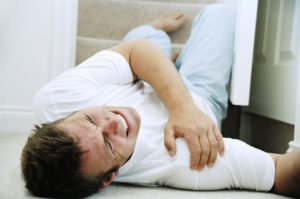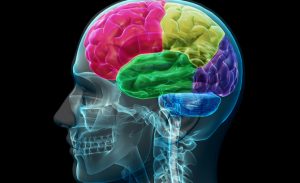Slip and Fall Accidents Often Lead to Traumatic Brain Injuries

- 1. Bronx construction workers must stay alert to try and avoid sudden fall injuries
- 2. Both mild and more severe brain injuries can develop after simple fall accidents
- 3. Children’s traumatic brain injury symptoms may look a bit different
- 4. Diagnostic tests are often used to evaluate adults who may have suffered a TBI
- 5. Types of treatments often offered to traumatic brain injury patients
- 6. Five keys to avoid construction site trips and fall accidents
- 7. Get legal help in case of a slip and fall accident injury in the Bronx
After seven New York City construction workers died during the first five months of 2021, aggressive action was taken. The NYC Department of Buildings conducted “Zero tolerance” safety sweeps for 90 days across all five New York City boroughs. Operators of dangerous construction sites were issued nearly 1,500 stop-work orders. These corrective steps were crucial since so many workers who survive serious workplace falls and other construction accidents often develop traumatic brain injuries that greatly limit their future activities.

Unfortunately, New Yorkers may also suffer a bad slip and fall injuries while pushing carts through crowded grocery stores, navigating defective sidewalks, walking across a landlord’s property – or even while simply entering various office buildings.
After looking at several recent Bronx construction site accidents, this article will review symptoms of traumatic brain injuries, as well as common tests and treatments for them. General tips for avoiding construction site fall injuries are also shared.
Bronx construction workers must stay alert to try and avoid sudden fall injuries
- May 19, 2021. Two men on a Bronx construction site died when the elevator they were riding in suddenly dropped to the building’s bottom floor. The four-story structure was being renovated so that it could be used as a charter school. Although the FDNY said the GDI construction company had a permit for elevator work at the site, no one knew for sure if the elevator was being serviced at the time of the accident. The workers had mainly been using the elevator to carry construction debris between the different floors. One of the two men, a supervisor, died of his injuries. The other man was rushed with critical injuries to Lincoln Hospital.
- May 27, 2021. Later that very same month, a 49-year-old Bronx man (working in a different borough), fell to his death from the top of a building under construction. This man had been working on the roof of the structure just before he fell.
- August 2021. Quick action by highly alert workers prevented any major injuries when a part of a Bronx building under repair collapsed onto a sidewalk shed. FDNY units responded to the call and found that luckily, no one was hurt, even though several tons of debris had fallen.
All these events make it clear that while serious falls can result in traumatic brain injuries or death, these types of tragedies can be avoided when all workers stay alert and ready to help each other when dangerous events begin to unfold on Bronx construction sites.
Both mild and more severe brain injuries can develop after simple fall accidents
- Mild traumatic brain injuries (MTBIs). Most concussions fall under this label and are usually not life-threatening, especially if the patient’s symptoms last only a few minutes. However, people who are thought to have suffered a concussion should stop all major activity and remain under observation for as many hours as recommended by the treating physician. Symptoms often experienced by concussion patients may include one or more of those found on the following list.
- Loss of consciousness
- Changes in vision
- A feeling that unexplained time has been lost
- Nausea and vomiting
- Memory loss
- Drowsiness
- A ringing sound in the ears
- Moderate to severe (traumatic) brain injuries. Symptoms for these can also include:
- Weakness or numbness in the fingers or toes
- Sudden, unexplainable problems with motor coordination
- A loss of consciousness that might last many minutes or even hours
- Seizures or convulsions
- Significant fluids may start draining from either the eyes or the ears
- Almost uncontrollable vomiting may occur
Anyone who has just suffered a bad fall or blow to the head must seek immediate emergency room treatment. Such patients nearly always require lengthy periods of observation before they can be sent home alone.
Children’s traumatic brain injury symptoms may look a bit different
In addition to obtaining help if any of the symptoms already referenced above appear, parents or other caregivers should watch for the following, possible signs of a child’s brain injury.
- A distinct change in sleeping habits
- Babies may suddenly display new nursing habits
- Routine emotional events may cause a child with a TBI to cry uncontrollably
- There may be a sudden loss of interest in favorite toys or activities
- An odd, new type of drowsiness may develop or appear
Diagnostic tests are often used to evaluate adults who may have suffered a TBI
- The Glasgow coma scale. This test involves asking patients to perform simple physical tasks and to answer basic questions.
- A CT brain scan or MRI. These types of tests can help doctors look for possible blood clots and swelling or bruised areas in the brain
- General bloodwork must be completed
- Brain pressure tests can be run to locate or monitor possible bleeding in the brain
Types of treatments often offered to traumatic brain injury patients
- Surgery. A surgeon must often operate to relieve any excess pressure that may have built up in a patient who has just suffered a serious fall or blow to the head. In some cases, multiple surgeries may have to be performed.
- Speech and language therapy. Depending on the part of the brain that suffered an injury, some patients will need to relearn how to properly pronounce words again before trying to form proper sentences that will allow them to effectively communicate with others.
- Talking therapy and neuropsychology assistance. Many TBI patients are fully aware of all the cognitive and physical losses they have sustained. Individual support therapy can help many of these individuals realize how to move forward in their lives, even if they can no longer work again. Family therapy is also very crucial since different family members may be feeling some resentment due to the added tasks they may have to shoulder for the newly disabled person. Therapy also helps relieve general stress so the newly disabled person can stay motivated to keep up with rehabilitation, despite new challenges.
- Vocational rehabilitation. As traumatic brain injury patients complete different forms of therapy, they can often be taught how to do new types of work. This can greatly raise their optimism when prior job skills are no longer available to them.
- Recreational therapy. Since everyone benefits from exercise, a social worker will try to help the TBI patient find some enjoyable sports activities that can be adapted to current skill sets. Learning to have fun again, despite new limitations, is especially crucial when patients can no longer pursue their former job interests.
Five keys to avoid construction site trips and fall accidents
- Hard hats must always be worn to protect workers from falling objects
- Proper work boots must be chosen with special soles or treads
- Employers must require all workers to keep all tools not currently in use in buckets provided to them. Such buckets must be kept in safe places, away from walkways.
- Proper training classes must be provided to all workers, in their native language, to help them recognize all potential fall hazards in the workplace.
Get legal help in case of a slip and fall accident injury in the Bronx
If you have suffered a traumatic brain injury after a fall accident caused by someone else’s negligence, you need to contact our Bronx slip and fall accident injury law firm. We will carefully investigate all the facts of your case, review all your medical records, and then fight hard to win the maximum compensation available to you. We want every client to fully recover for all lost wages, pain and suffering, medical expenses, and other losses.





